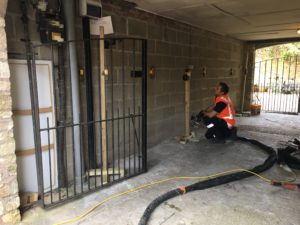
Concrete Underpinning vs Resin Injection
Since the summer of 2018 the number of subsidence claims being made has dramatically increased, highlighting how record hitting temperatures took their toll on UK buildings. Reports show that subsidence is affecting both residential and commercial properties, resulting in councils and landlords needing to rehome tenants while the underlying problem is fixed.
With the latest advancements in ground engineering, there are alternative solutions both councils and private developers can consider to help alleviate these problems, saving them money and reducing tenant disruption. When subsidence does occur, the first solution to come to mind is often traditional concrete underpinning. However, this tried and tested method is often slow, labour intensive and costly. As access is required under the original foundation of the property, occupants are usually required to vacate their premises while the excavation is being completed, increasing admin time and spend for homeowners, property managers and landlords.
Advanced solutions in the ground engineering sector, such as Mainmark’s Teretek® engineered resin injection and JOG Computer-Controlled Grouting solutions, can help mitigate these problems by offering modern alternatives to traditional underpinning.

Resin injection has been used globally for over 20 years and is proven to work. The process, likened to keyhole surgery, involves injecting expanding structural resin under the existing foundations through small incisions made in the ground, typically only 16mm in diameter from outside a building. The resin then flows into the soil and expands, compressing the surrounding soil while filling any voids and strengthening the ground.
By eradicating the need to excavate, this process is cleaner than concrete underpinning and less disruptive. As large excavations underneath the foundation are not required, many projects are completed in hours and occupants can usually stay in the building while the work is carried out.
Robbie Blanchfield, commercial manager at Mainmark, commented: “Restoration projects often have tight budgets that are closely scrutinised, which is why it’s vital people are made aware of solutions that could potentially save a considerable sum of money. Additionally, minimal invasive methods reduce the need for onerous work such as deep excavations or partial demolition, meaning that these solutions can often be applied while the property is still occupied. Our Teretek engineered resin injection solution is a cost-effective way to repair subsidence problems and a method that homeowners and property developers should consider when faced with such problems.”
For more information regarding resin injection and its ability to save money and disruption please visit mainmark.com/uk/technology/teretek/
